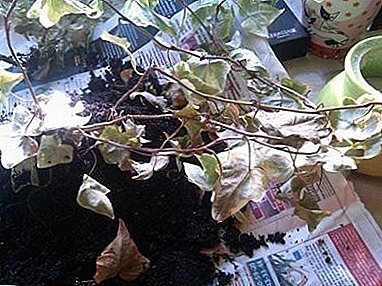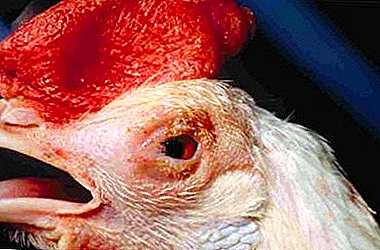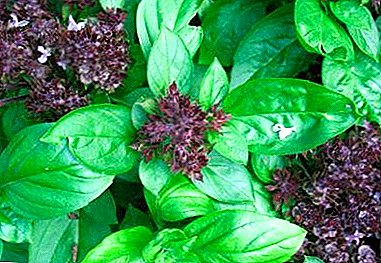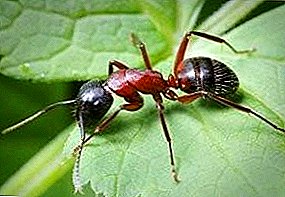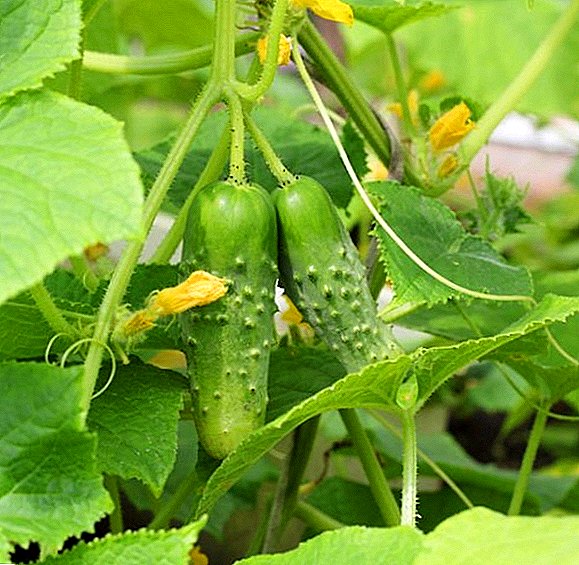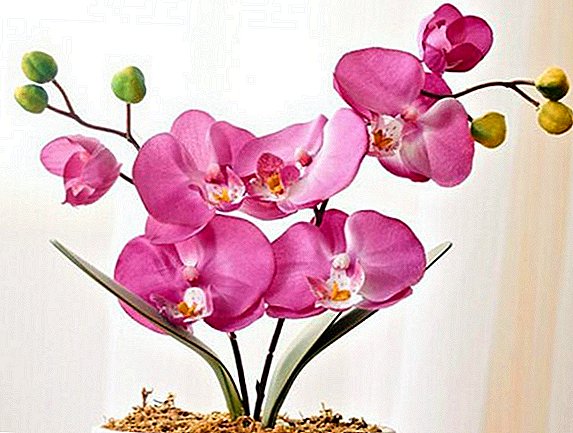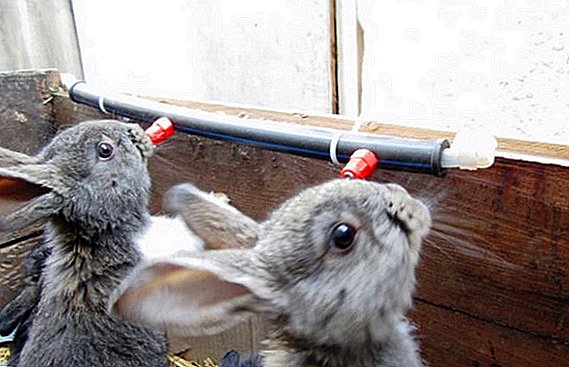 The maintenance of rabbits remains a popular area of livestock. They are valued for tender meat and skins, and for their production requires constant care. The stores have a lot of accessories that make it easier, but some devices can be made on their own. Let's see how to make homemade drinkers for rabbits.
The maintenance of rabbits remains a popular area of livestock. They are valued for tender meat and skins, and for their production requires constant care. The stores have a lot of accessories that make it easier, but some devices can be made on their own. Let's see how to make homemade drinkers for rabbits.
Requirements for drinkers for rabbits
These animals consume quite a lot of water (about 1 liter per day) and are demanding of its purity - the mud floating in the liquid almost immediately “responds” to the loss of appetite in animals.
The rabbits themselves are very mobile, and it is not difficult to turn over the capacity for them, so you have to think about the shape of the drinker and its secure attachment. Yes, and breeding in cells "swamp" is undesirable.  Those who have been keeping krays for a long time noticed that for some reason animals use an open container with water as a toilet, so water has to be changed regularly, and there is not always time for that.
Those who have been keeping krays for a long time noticed that for some reason animals use an open container with water as a toilet, so water has to be changed regularly, and there is not always time for that.
Important! Try to regularly inspect how full the containers are. For example, the minimum for a vacuum or the simplest "bottle" system is 0.5 liters - if there is less water left, you will have to top up.Having firmly decided to undertake making your own avtoilka for rabbits, consider these nuances. We will have to keep in mind other requirements for such constructions, namely:
- Security. On the drinking bowls there should be no burrs, and even more acute angles. Cans are excluded.
- Protection against dust and debris.
- The volume should be enough for a day (that is, a liter with a small margin).
- Convenience for animals.
- Filling and washing containers should also be as easy as possible. Position it in such a way as not to stretch across the entire cage, risking to pour water.
- Reliability and simplicity. They try to make the system so that it is understandable for rabbits, and they could not chew it (sometimes it happens).

Read about such popular breeds of rabbits: "Rizen", "Baran", "Rex", "Flandre", "Butterfly", "California", "Black-Brown".
What are drinking bowls for rabbits
The easiest way to take a bowl, but this simplicity turns into a constant change of water and its rapid pollution. Even for a small subsidiary farm is not the best option.
Much more suited cup, vacuum or nipple devices. Take a closer look at them.
Did you know? Breeding and maintenance of rabbits has long been an important branch of animal husbandry, requiring a solid scientific base. The first branch institution in the former USSR was the rabbit research institute opened in 1932, which still operates today.
Cup make of bottles and plastic cans. Plus they have only one - a large amount. They cause inconvenience much more: they have to be weighed down by hooking a weight on the back side or securing the clamp. In addition, they are open, dirt gets there unhindered, the container has to be washed several times a day.  Vacuum (or semi-automatic) much more practical. The essence is simple - the water from the additional container is fed into the "main" drinking bowl by gravity until it reaches the desired level. Such a reservoir may be a plastic bottle, which is attached to the cell wall with hose clips (the lower fixture controls the level of the liquid at the same time).
Vacuum (or semi-automatic) much more practical. The essence is simple - the water from the additional container is fed into the "main" drinking bowl by gravity until it reaches the desired level. Such a reservoir may be a plastic bottle, which is attached to the cell wall with hose clips (the lower fixture controls the level of the liquid at the same time).  "Vacuum" is simple and cheap to manufacture, and the water in such a system remains clean for a long time. There is also a minus: the liquid can easily flow out of the bowl, and in winter there is a risk of freezing.
"Vacuum" is simple and cheap to manufacture, and the water in such a system remains clean for a long time. There is also a minus: the liquid can easily flow out of the bowl, and in winter there is a risk of freezing.
The most popular are nipple system. From a closed container, water goes into the tube, at the end of which there is a ball nipple. To get drunk, the rabbit will have to press on this ball with his tongue.
Important! In order to avoid leaks, the joints are coated with sealant or rubber washers are installed - gaskets.Such drinkers are the most practical: the water is clean and does not evaporate (hence the low consumption), it is unrealistic to shed it even for a powerful adult crawl. In addition, it is an excellent method for the simultaneous supply of vitamin or therapeutic solutions in all cells.
Among the disadvantages are some manufacturing complexity and higher cost. With frequent toppings, a lid may leak. In the cold season it happens that the nipple works intermittently (the ball can just freeze).
Automatic devices fit large farms. From a large tank in terms of water, water is fed through tubes into bowls installed in cages. Flow is controlled by a float valve, which is lowered with the water level in the tank.  So dozens (or even hundreds) of animals at the same time receive clean water. True, such a system is laborious in assembly and quite expensive.
So dozens (or even hundreds) of animals at the same time receive clean water. True, such a system is laborious in assembly and quite expensive.
Having decided on the choice, it's time to learn how to make a drinker for rabbits.
Making drinking bowls with your own hands
Anyone can make a drinker, all the more so for this you need the available materials, which are in abundance at each compound. Let's start with the most simple, "bottle" designs.
Read also about how to make drinkers for chickens and chickens with their own hands.
From the bottle
Everything is simple here - they take an ordinary plastic bottle and cut a hole in the middle with a heated knife. In size it should be such that a rabbit muzzle passes through.
Did you know? In 1963, domestic breeders introduced a new breed - the Soviet chinchilla. This is a peculiar hybrid of small rodents of the French lines and large white rabbits of the Giant breed.For this, both 1.5 liter containers and 5-liter buckles are suitable (depending on the number of animals in one cage and their age).
Such basic drinkers for rabbits, made by hand from plastic bottles, are usually fixed on the cage with two pieces of soft wire. One grabs the bottleneck and the other holds the top.
There is one point associated with their use - crawls (especially young ones) can bite off such a container in a week - the second. Therefore, it makes sense to make a more reliable vacuum system.
Vacuum
The same plastic bottles are used, but the principle of delivery is different: part of the water, pouring out, covers the neck, and then - physics: the difference in pressure prevents all the water from flowing out at once.
The material here is at least as time consuming:
- Take the bottle and any container with rounded edges (bowl, container, tin).
- The bottom is cut, there will be poured water.
- Then unscrew the plug, thereby adjusting the flow of water. Some do it differently: the cork remains in place, but 2-3 large holes are made in it with an awl or knife.
Important! In some farms you can see drinking bowls using tin or metal cisterns. They are durable, but the edges have to be processed with a file, and sometimes they can start up the “seam” with a soldering iron (so as not to injure animals).
- The bottle is attached to the cage wall with wire or clamps at a height of 8-10 cm from the floor.
- Both containers are positioned so that the lid is located near the bottom of the plate, but not adjacent to it, thus blocking the flow.
- Everything, it is possible to fill in water.
If the cage is large and densely populated with animals, then drinkers will need a few. The main thing - that they cover the need of rabbits in the liquid.
Also in the home yard you can keep these farm animals: chickens, pigs, nutria, goats, cows.
Nipple (nipple)
Handmade nipple drinkers for rabbits work on the same principle, but may differ in design. Those that simpler in the manufacture, suitable for a small number of livestock living in 1-2 cages. Let's start with them.
They are made like this:
- Take a bottle with a cap and a piece of soft rubber or transparent plastic tube. When you buy a nipple in the kit usually offer and suitable for the size of the handset - this is still the best option.
- In the lid carefully cut out the hole diameter of the tube.
- A nipple is inserted into the tube (at one end), and the other end is inserted into the cap.
Did you know? In 1859, an Australian farmer produced 12 pairs of animals. After 40 years, the number of rabbits on the continent was about 20 million, and during this time they completely destroyed some species of plants, left without the forage base of the local sheep and aboriginal animals.
- A bottle is hooked onto the cell wall with clamps (the smaller one is near the neck, the larger one is at the top). The rabbit should be comfortable using the nipple, so pick the right height.
- Before filling the container with water, place a small plate under it - until the animals get used to this method, water may drip a little into half cells.
For a large number of rabbits have to do complicated the system. In addition to the square tube nipples themselves, the store will have to buy a drip tray or a “microcup”, a hose, plugs and an adapter for the tubes. From the tool you need a drill, drill - "nine" and a tapered tap, which cut the internal thread. Then everything looks like this:
- On the side of the pipe where the grooves of the tubes go, make marks and drill holes.
- Then they "pass" a tap.
- A nipple is inserted into these threads.
- At the joint end of the "trunk" pipe put a cap.
- In the harvested tank or bottle is a hole threaded under the hose.
- The other end connects the hose to the nipple tube. For tightness, the joints are wrapped with tape (suitable for Teflon).
- It remains to attach the drift eliminators.
 Such work takes more time, but such a system will also have a large “resource”, and if you put a large tank, you will not often have to add water - this is also a saving.
Such work takes more time, but such a system will also have a large “resource”, and if you put a large tank, you will not often have to add water - this is also a saving.Important! In winter, you should not save on heating and lighting: rabbits need comfort. In addition, the water should not freeze (sometimes large tanks are warmed).Now you know what are the drinking bowls for rabbits, how to build them with your own hands, based on the photos and drawings. We hope they will serve in the household for a long time, and furry pets will delight with rapid growth.



